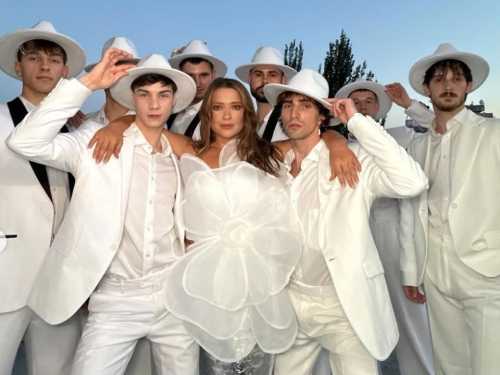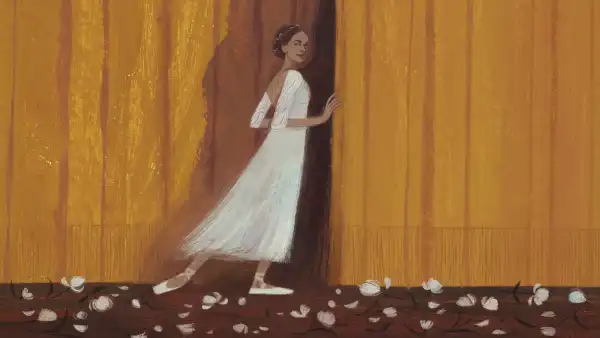
Save this storySave this storySave this storySave this storyYou’re perusing the Goings On dispatch, a manual to what we’re observing, hearing, and undertaking this week. Subscribe to get it delivered straight to your inbox.
At times, a comeback also marks a final chapter. Misty Copeland, the trailblazing Black female principal dancer at American Ballet Theatre, could be deemed the most well-known American ballerina of her time, yet she hasn’t really danced in a ballet in half a decade, since before the pandemic emerged. Meanwhile, she hasn’t been inactive: she released multiple books, welcomed a child, and founded an organization that extends mentorship—as well as ballet instruction—to youths in underfunded communities. Her profession, coupled with her promotion of Black dancers, has undeniably influenced the shifting of mindsets within the art. Nevertheless, something remained absent: the quintessential ballet adieu. The glitter, the abundance of blossoms, the tears shed. Thus, she’s returning for a culminating performance, scheduled for Oct. 22, within A.B.T.’s autumn program at Lincoln Center’s David H. Koch Theatre (Oct. 15-Nov. 1).
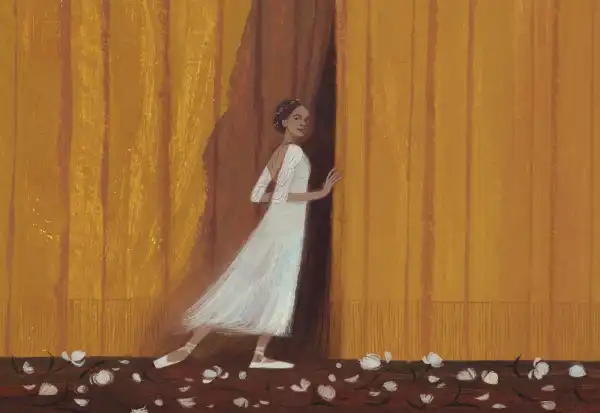
Illustration by Hayden Goodman
It’s difficult to overstate the commitment and resolve it must have demanded of Copeland to resume pointe work following such a long break. At her farewell, she is scheduled to execute an entrancing pas de deux taken from Kenneth MacMillan’s “Romeo and Juliet” along with an excerpt extracted from Twyla Tharp’s sensuous “Sinatra Suite.” Furthermore, Kyle Abraham, a choreographer who of late has imbued ballet with his alluring, undulating aesthetic, has been engaged to construct a commemorative piece for Copeland as well as her enduring colleague Calvin Royal III. (Royal proceeded along Copeland’s path, attaining the pinnacle of the ballet pecking order at A.B.T.)
The remainder of A.B.T.’s three-week program constitutes a miscellany of familiar and cutting-edge works. One lineup showcases three ballets hailing from the company’s formative epochs, including Antony Tudor’s 1938 “Gala Performance,” a lighthearted take on ballet conventions and ballerina affectations. Another contemplates Twyla Tharp’s extended affiliation with the company, which commenced in 1976 through “Push Comes to Shove,” a dazzling display of stagey humor and daring that she originated for the newly arriving Mikhail Baryshnikov. (It will be performed by two of the company’s current set of virtuosos, Isaac Hernandez and Jake Roxander.) A further lineup joins together a fresh composition by the Brazil-born Juliano Nunes with one of the most compelling pieces fashioned for the company over the past decade, Alexei Ratmansky’s “Serenade After Plato’s Symposium.”—Marina Harss

About Town
Indie Rock
The Burlington indie rocker Greg Freeman discreetly launched his 2022 maiden album, “I Looked Out,” a work of genius of bleak Americana, absent a label or advertising plan. Taking cues from the working-class verses of alt-folk artists such as Jason Molina and Jay Farrar, Freeman detailed union discord, transatlantic road trips, interactions with the natural world; his severe, youthful despair garnered dedicated esteem. “Burnover,” his latest—where he performs on ten instruments, inclusive of glockenspiel, violin, and concertina—is more exuberant, extracting raw energy from his live performances, where he and his band have seized the awareness of the nineties synth-rock icons Grandaddy, who are having them on tour this fall. Freeman wows crowds with a wailing drawl that seems on the verge of breaking but never quite manages to.—Holden Seidlitz (Brooklyn Steel; Oct. 15.)
Off Broadway
Within the thrilling, bilingual two-man musical “Mexodus,” led by David Mendizábal, Brian Quijada and Nygel D. Robinson—gifted composer-performers—recount the saga of Henry (Robinson), an enslaved man who makes his escape from Texas toward Mexico, which is totally freed by 1829. Carlos (Quijada), the Mexican former medic who saves Henry from the Rio Grande, schools him on the expression “Todos estamos juntos en esto,” and musically, too, the duo underscores unity, employing live-looping tech in order that the two men are able to sound like countless individuals. With their skills, everything turns into border music: ranchera, rap, classical piano, heavy-bottomed funk. Within one astonishing, delicately plucked duet, their guitars communicate with deft pleasantness in instances where the not-yet-friends still bumble around.—Helen Shaw (Minetta Lane; through Nov. 1.)
Hip-Hop
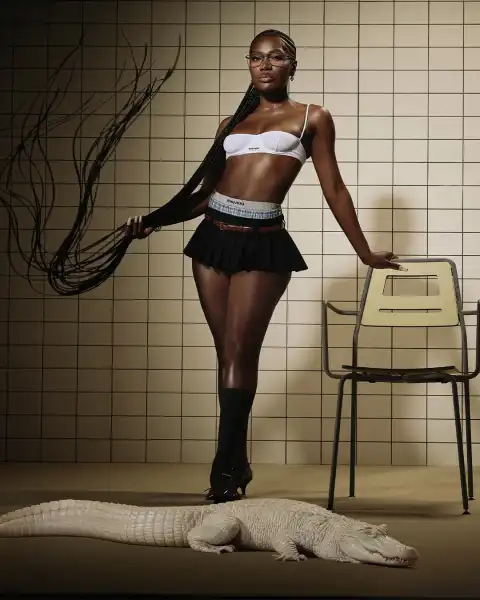
Photograph by C Prinz
At the point when Doechii became simply the third woman to secure the Grammy intended for Best Rap Album, during February, it felt less like an ascension to the throne than an ideal being realized. The much-anticipated full-length mixtape that received the award, “Alligator Bites Never Heal,” was spirited and varied, brimming with a willingness to be outstanding. During 2022, the Tampa rapper transmuted viral fame into record agreements with Top Dawg Entertainment and Capitol Records, beginning a superstar arc that felt destined. Her linguistics are flexible, her flows animated, and she identifies exactly the appropriate balance amongst classic and current sensibilities. Doechii seemed to channel all of her fervor into her Grammy gig, which ceremonially denoted her transition to the limelight.—Sheldon Pearce (The Theatre at MSG; Oct. 20.)
Classical
Back in 1613, Dutch colonialists and the Haudenosaunee established a peace concord, now recognized as the Two Row Wampum Treaty. The contract is among the most ancient on record within the prolonged, intricate, and pitiless background amongst European pursuits and Indigenous populations within North America. Wording, dates, and names culled from treaties such as this one feature within the composer Jerome Kitzke’s twenty-four-part libretto “I Wonder If This Ground Has Anything to Say (A Treaty Illumination).” The creation, presented during its global debut by the contemporary music assemblage thingNY, throws light on the persistent—and underaddressed—inequities confronting Indigenous communities, and the U.S. government’s commitments to observe its accords.—Jane Bua (Merkin Hall; Oct. 16.)
Art
Two prominent exhibits at Gordon Robichaux possess an analogous concept: the remnants and our use thereof. Within the artist DW Fitzpatrick’s sparse creations, their employment of chewed-on pencils as well as a plastic cast of a thumb invokes absent bodies, but the spirits of those alive are powerfully manifest. Fitzpatrick’s discerning perspective shapes the witty and sagacious clock face intended for the sculpture “Arm Got Lost on Way to Sleeve” (2025). The sixty-one-year-old artist’s colors, when employed, are softened, whereas the superb performer and collagist Agosto Machado’s universes are characterized by color and compactness. Within his devastating “Anna May Wong (Altar)” (2025), the respected Chinese American celebrity is visible within photographs juxtaposed alongside a rose-tinted shawl plus an iron—calling forth the stereotypical perception of a Chinese woman being a laundress. The brilliant “Untitled (Obituaries)” stands as a collage of death announcements coming from the artist’s acquaintances, revealing how the early years ran out for many gay individuals through the arrival of AIDS, and how time presses on for us all.—Hilton Als (Through Oct. 26.)
Movies

“It Was Just an Accident.”Photograph courtesy NEON
Within the Iranian director Jafar Panahi’s new dramatic work, “It Was Just an Accident,” a political suspense film created illicitly within and near Tehran, a driver named Eghbal brings his auto into a garage upon a remote back road. At this point, a worker named Vahid, a former political prisoner, considers he identifies Eghbal as being an officer that tortured him. Subsequent to abducting Eghbal and in the course of getting set to kill him, Vahid doubts his personal recollection (he wore a blindfold in detention) and, putting the captive into a van, pays visits to other previous political detainees to seek verification; they provide a broad spectrum of responses. The narrative functions upon fable-esque serendipities and moral abstractions, but they’re surpassed in importance by the staggering details regarding lives ruined and minds shaped through unspeakable atrocities.—Richard Brody (Opening Oct. 15.)

Pick Three
Paige Williams upon crime narratives that boost the genre lacking damaging the psyche.
1. Prior to David Simon creating “The Wire,” he used spare time far from his reporting position inside the Baltimore Sun for the purpose of producing a book, “Homicide: A Year on the Killing Streets,” among the greater precise depictions of police force work. (Browse it for a multicolored exposition of the Miranda warning alone.) The 1991 book immediately produced an eponymous NBC program starring the magnificent, departed Andre Braugher (visualized). All seven seasons are now being streamed on Peacock. It’s good to observe Detective Frank Pembleton again.
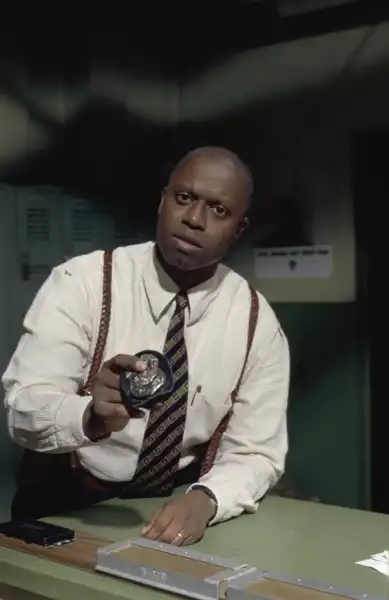
Photograph from NBC / Getty
2. “Spotlight: Snitch City,” a podcast created by the Boston Globe’s highly respected Spotlight investigative unit, commences with one officer endeavoring to hold another accountable for unsettling pursuits concerning confidential informants within New Bedford, Massachusetts, Herman Melville’s former fishing territory. The revelation operates, clearly, as being a reminder the fact that country’s health is determined by safeguarding journalism’s constitutionally safeguarded authority to scrutinize those occupying power. At the very least one commanding officer has retired.
3. James Graham’s “Punch,” a play that’s functioning both on Broadway in addition to on London’s West End, expresses the actual story regarding British parents who decided to accept, not hate, a stranger who randomly sucker-punched their son, a paramedic within training, killing him. This kind of reconciliation process—facilitating associations among perpetrators and victims—is named restorative justice, and it’s scarcely within the spotlight. Graham couldn’t have been more correct whenever he recently explained to the Times that “Punch” analyzes “how you create empathy inside a cruel society.”
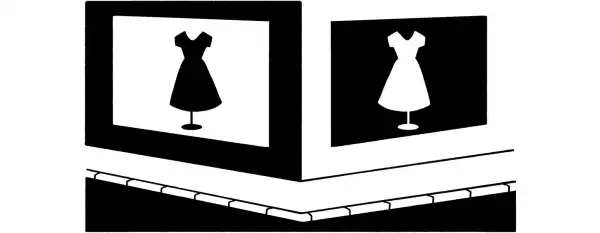
On and Off the Avenue
Rachel Syme upon cowgirl fashion.
Inside Albuquerque, New Mexico, where I matured, cowboy boots are quite possibly as commonplace as tennis shoes. Boot-cut jeans were never a temporary trend in the desert Southwest; they’re considered classic, the best blending of style and performance. For many of my classmates, the enthusiasm for riding gear appeared to be less regarding basic effectiveness and much more regarding style; there seemed to be a heavy longing to be part of a dusty tradition, regardless of whether you used additional time strolling through the shopping mall than tending to the stables. It seemed to be a teen-age rite of passage to visit Dan’s Boots & Saddles, a Western-wear emporium that’s been serving the Albuquerque area since 1953, where a huge selection of boot variations, from snakeskin to ostrich leather, line the walls. I owned a pair of silver calf-height boots (recognized within the business as “roper boots,” for their shorter length) that I teamed with every outfit, from denim shorts to sundresses. I wore them until they wore out.
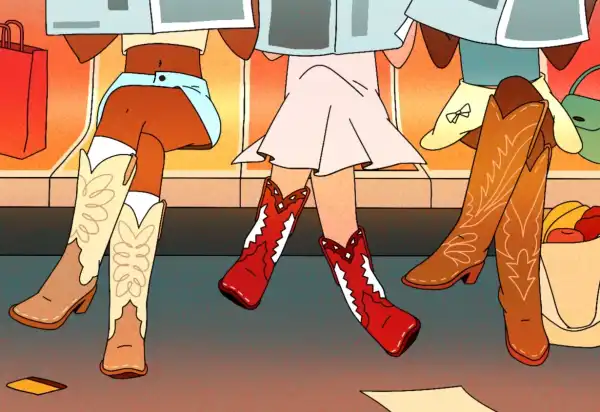
Illustration by Sunny Wu
I recently considered those boots once more, when I entered the enormous new New York flagship store intended for Tecovas, a fast-expanding brand coming from Austin, Texas, which happens to be attempting to take over the nouveau Western-wear trend within the United States. In a number of ways, Tecovas is the precise opposite of Dan’s Boots & Saddles—it was never intended to be a down-home mom-and-pop business. It was launched, within 2015, by Paul Hedrick, a Dallas-born business owner who departed Texas intended for Harvard and then proceeded to work at a private-equity company in Greenwich, Connecticut. Hedrick, who was on the hunt for a cutting-edge brand idea, found that the American market intended for Western boots alone seemed to be worth in excess of three billion dollars at that time, and Hedrick used all his 401(k) in order to ensure it is a success. Based on Texas Monthly, Hedrick then journeyed to León, Mexico, where the majority of the most widely used boots in the world (inclusive of Lucchese) are produced, and contracted artisans who also generate high-end brands to work on his concept. Within five years, he’d exposed a giant headquarters in Austin and raised nearly thirty million dollars from investors who’d also backed Warby Parker and Bonobos. (Hedrick walked apart as C.E.O. within 2022, but remains chairman.)
What Tecovas is selling is not local allure but streamlined simplicity; it provides uncomplicated styles within accessible colors at a mid-level price stage (its best-selling knee-high women’s boot, the Annie, costs three hundred and forty-five dollars). Western wear has exploded in recent years—the marketplace is anticipated to reach a hundred and thirty-five billion dollars by 2030—and Tecovas has rushed in to fill the demand with a range of classic cowboy-chic staples; it now operates fifty stores all over the country and counting. The New York outpost, within SoHo, is, at forty-five hundred square feet, the brand’s largest yet—and the one with the the majority of features. It has a boot-shining station, a bourbon bar, as well as stretching and embossing services. Yee-haw.
Sourse: newyorker.com


